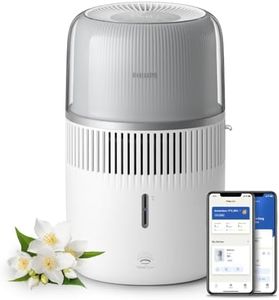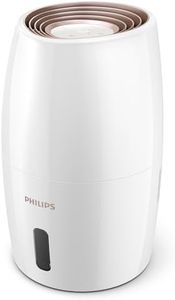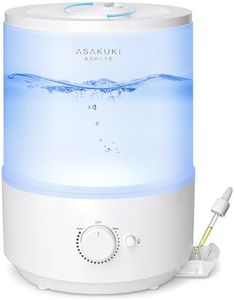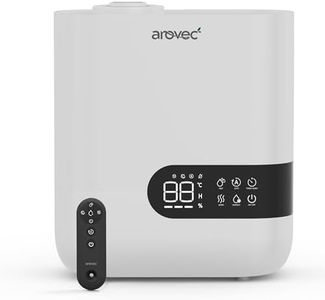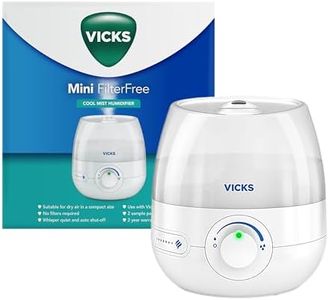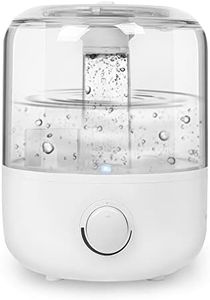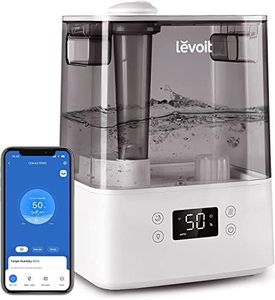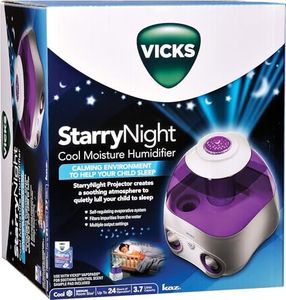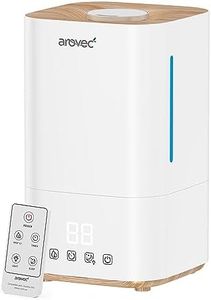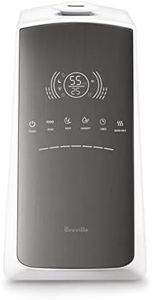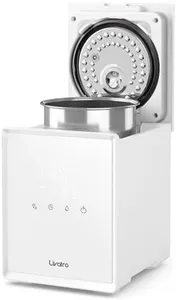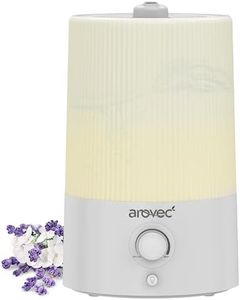We Use CookiesWe use cookies to enhance the security, performance,
functionality and for analytical and promotional activities. By continuing to browse this site you
are agreeing to our privacy policy
10 Best Humidifier For Toddler
From leading brands and best sellers available on the web.Buying Guide for the Best Humidifier For Toddler
Choosing the right humidifier for a toddler can significantly improve air quality in their room, making it easier for your child to breathe, especially during dry seasons or if they have a cold. Because toddlers are more sensitive to changes in their environment, it's important to consider both effectiveness and safety. Start by thinking about the size of the room, where you plan to place the humidifier, and how much maintenance you’re willing to do. Always prioritize models that are easy to clean, as well as those with safety features suitable for young children.Type (Cool Mist vs. Warm Mist)This refers to how the humidifier adds moisture to the air: cool mist models use ultrasonic or evaporative technology to disperse a fine, cool vapor, while warm mist options boil water to create steam. For toddlers, cool mist is generally recommended, as it doesn’t heat up and eliminates the risk of accidental burns. If you're choosing between types, pick a cool mist for safety; warm mist can be useful for some specific situations like congestion, but is less safe around small children.
Room CoverageRoom coverage tells you the maximum size of room the humidifier can effectively humidify, usually measured in square feet. Small units might cover up to 200 sq ft, medium ones up to 400 sq ft, and large humidifiers go beyond that. To choose the right capacity, match it to the size of your toddler’s room—a unit too small won’t provide enough moisture, while one that's too large may make the room too damp or noisy.
Tank CapacityTank capacity is how much water the humidifier holds, usually measured in liters or gallons. Smaller tanks (1-2 liters) need frequent refilling and are good for short nightly use, medium tanks (2-4 liters) last overnight, and large tanks (over 4 liters) can run for a whole day or more. Think about your daily routine: if you want to refill less often, go for a larger tank, but ensure it’s not too big for the room.
Noise LevelNoise level describes how quietly the humidifier operates and is usually measured in decibels. Lower numbers mean quieter performance, with some models designed for ‘whisper-quiet’ function, ideal for light-sleeping toddlers. If your child is sensitive to noise or you want to place the humidifier near their crib, look for options specifically described as quiet or silent.
Ease of CleaningEase of cleaning refers to how simple it is to remove, wash, and reassemble the parts of the humidifier. Since stagnant water can harbor mold or bacteria, it’s important to clean the humidifier regularly. Models with wide openings, removable tanks, and fewer small nooks are much easier to maintain. Choose a model you feel you can confidently and frequently clean to keep your toddler’s air safe.
Automatic Shut-off and Safety FeaturesAutomatic shut-off means the unit turns itself off when the tank is empty, preventing the device from running dry. Some models add features like tip-over protection or child locks. These features are especially important in a toddler’s room to avoid accidents and prolong the life of your humidifier. Always check for such safety features when choosing for a child’s space.
Filter Type or FilterlessSome humidifiers use filters to trap minerals or impurities from the water, while filterless ones avoid the need for replacement parts. Filtered models need regular filter changes (adding to upkeep), but might be better with hard tap water to prevent white dust; filterless models are easier to manage as long as you use clean/distilled water. Your water source and preference for maintenance can guide whether you choose a filtered or filterless design.
